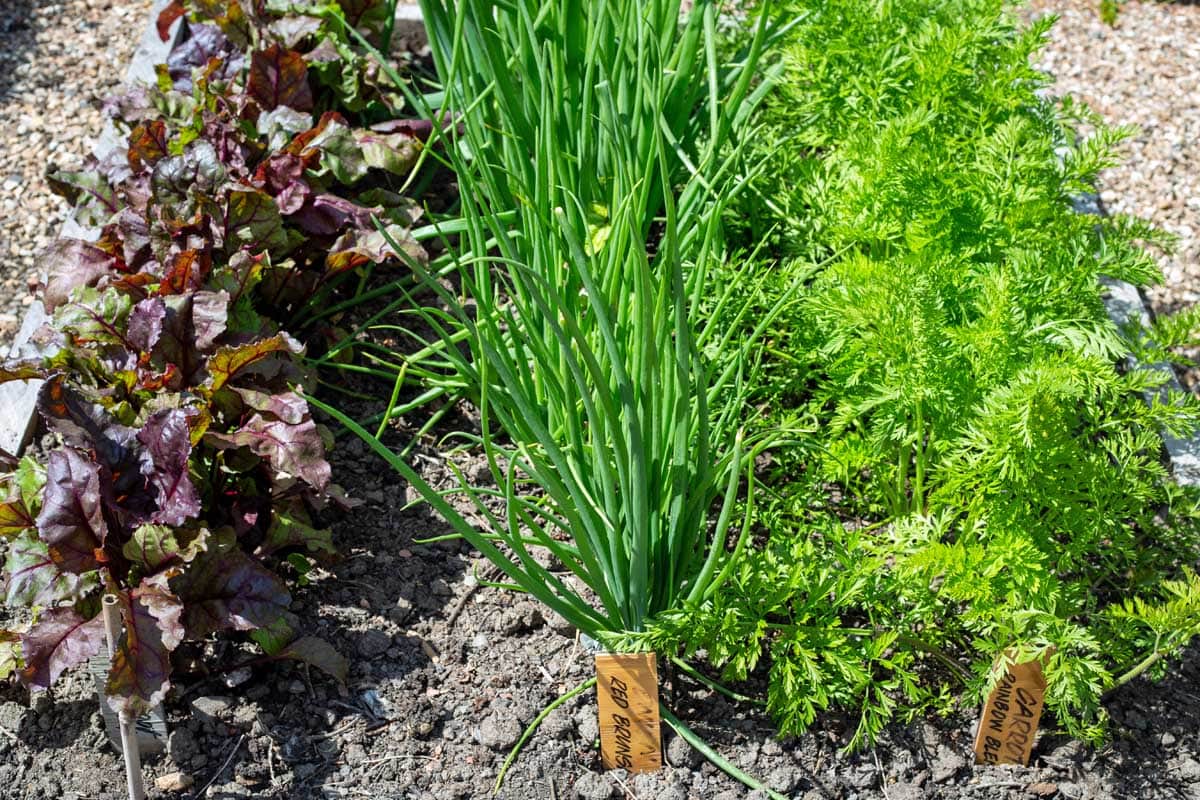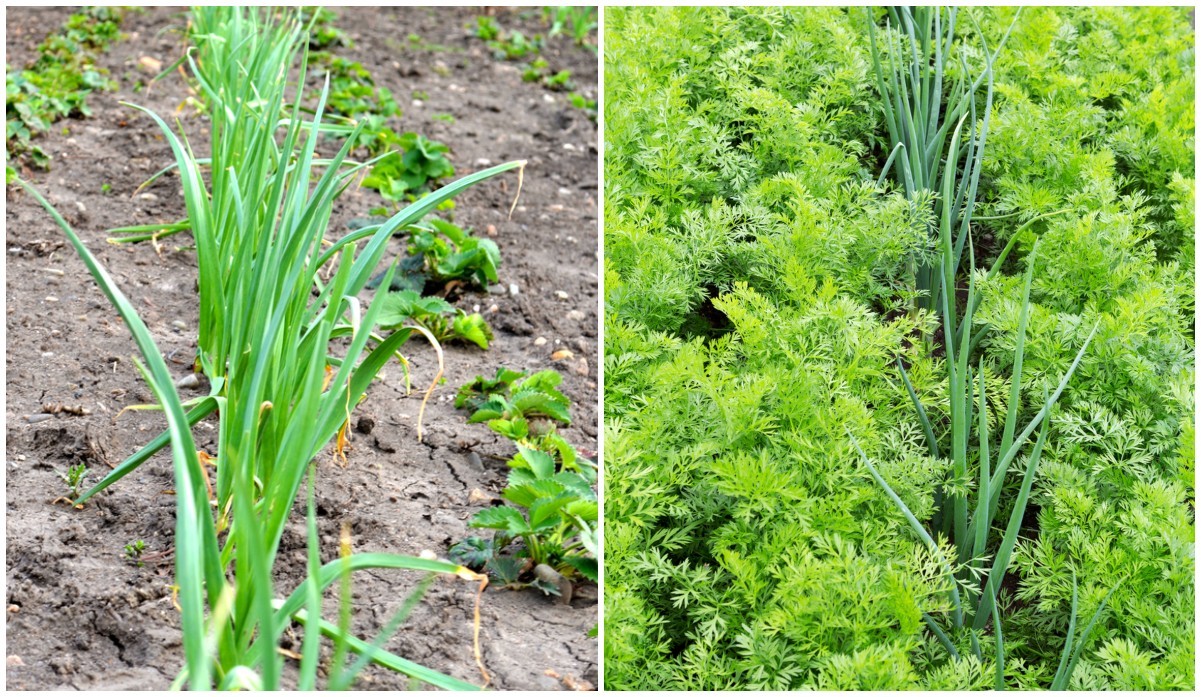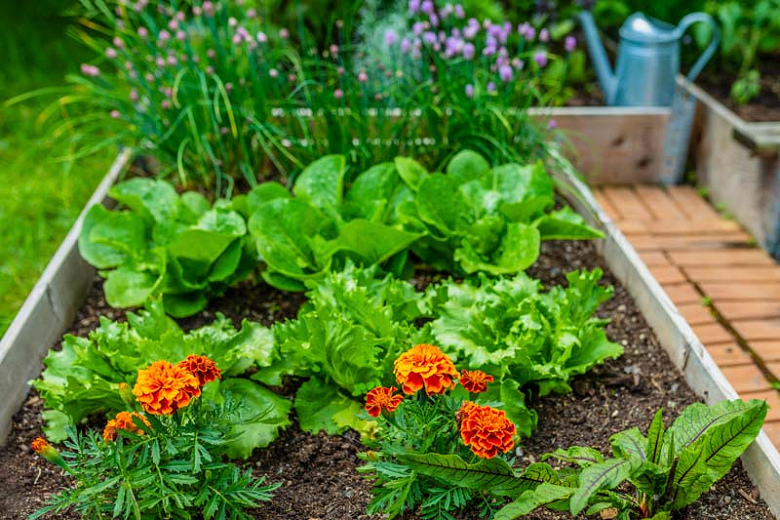The Beetiful Benefits Of Companion Planting
The Beetiful Benefits of Companion Planting
Companion planting is a gardening technique that involves planting different crops together to improve their health and productivity. This ancient practice has been used for centuries by farmers and gardeners around the world, and there is a growing body of scientific evidence to support its benefits.
There are many different ways to companion plant, but some of the most common benefits include:
- Increased yields: Companion planting can help to increase crop yields by a number of mechanisms. For example, some plants can attract beneficial insects that help to control pests, while others can help to improve soil fertility.
- Reduced pest pressure: Companion planting can help to reduce pest pressure by attracting beneficial insects, deterring pests, or providing physical barriers to pests. For example, planting marigolds near tomatoes can help to deter tomato hornworms, while planting chives near roses can help to attract ladybugs, which are a natural predator of aphids.
- Improved plant health: Companion planting can help to improve plant health by providing shade, shelter, or support. For example, planting nasturtiums near cucumbers can help to protect the cucumbers from pests and diseases, while planting corn and beans together can help to create a living trellis for the beans to climb.
- Enhanced flavor: Some companion plants can actually enhance the flavor of other plants. For example, planting basil near tomatoes is said to improve the flavor of the tomatoes.
In addition to these specific benefits, companion planting can also help to improve the overall health of your garden by:
- Attracting pollinators: Pollinators are essential for plant reproduction, and companion planting can help to attract pollinators to your garden. This is important for both vegetable and flower gardens, as pollinators help to ensure that your plants will set fruit and produce seeds.
- Improving soil health: Companion planting can help to improve soil health by breaking up the soil, adding organic matter, and attracting beneficial microorganisms. This can lead to healthier plants and a more productive garden.
- Minimizing erosion: Companion planting can help to minimize erosion by providing ground cover and stabilizing the soil. This is especially important in gardens that are located on slopes or in areas that are prone to wind or water erosion.
If you are interested in trying companion planting, there are a few things you should keep in mind. First, it is important to do some research to learn about the specific benefits of different companion plants. Second, you need to choose plants that will grow well in your climate and soil conditions. Finally, you need to be patient and experiment with different combinations of plants to find what works best for you.
With a little planning and effort, companion planting can be a great way to improve the health, productivity, and flavor of your garden. So why not give it a try? You might be surprised at how much you enjoy it!
Beetroot is a delicious and versatile vegetable that is easy to grow. But did you know that there are some plants that can help to improve the growth and flavor of your beetroots?
That's right, companion planting is a great way to boost the productivity of your vegetable garden. By planting certain plants together, you can create a symbiotic relationship that benefits both plants.
Some of the best companion plants for beetroot include:
- Brassicas: These plants, such as broccoli, cabbage, and Brussels sprouts, help to deter pests and diseases that can damage beetroots. They also help to improve the soil quality, which can lead to larger and tastier beetroots.
- Alliums: These plants, such as onions, garlic, and chives, have a strong scent that can repel pests and animals that might otherwise eat your beetroots. They also help to improve the flavor of beetroots.
- Legumes: These plants, such as beans and peas, fix nitrogen in the soil, which can benefit beetroots and other plants. They also help to suppress weeds, which can free up your time to focus on other tasks.
If you're looking for more information about companion planting for beetroot, I recommend visiting Garden Wiki. This website has a wealth of information on the subject, including a list of the best companion plants for beetroot, as well as tips on how to plant them together.
FAQ of best companion plants for beets
Q: What are the best companion plants for beets?
A: The best companion plants for beets are those that share similar growing conditions and have complementary benefits. Some of the best companion plants for beets include:
- Alliums: Alliums, such as onions, garlic, and chives, help to repel pests that can damage beets, such as aphids and flea beetles. They also help to improve the flavor of beets.
- Brassicas: Brassicas, such as broccoli, cabbage, and Brussels sprouts, help to improve the soil structure and drainage around beets. They also help to deter pests and diseases.
- Lettuce: Lettuce helps to suppress weeds and improve the moisture content of the soil around beets. It also helps to shade the beet roots, which can help to prevent them from becoming bitter.
- Marigolds: Marigolds help to repel pests and diseases, such as nematodes and root rot. They also help to improve the overall health of the beet plants.
- Spinach: Spinach helps to suppress weeds and improve the soil structure around beets. It also helps to attract beneficial insects, such as ladybugs and lacewings.
Q: What plants should not be planted near beets?
A: There are a few plants that should not be planted near beets, as they can compete for resources or attract pests. These plants include:
- Pole beans: Pole beans can shade beet plants, which can stunt their growth.
- Field mustard: Field mustard can compete with beets for nutrients and water.
- Charlock (wild mustard): Charlock can harbor pests and diseases that can damage beets.
Q: What are the benefits of companion planting with beets?
A: There are many benefits to companion planting with beets, including:
- Disease and pest control: Companion plants can help to repel pests and diseases that can damage beets.
- Improved soil health: Companion plants can help to improve the soil structure and drainage around beets, which can lead to healthier plants.
- Increased yields: Companion plants can help to increase the yields of beets by providing shade, attracting beneficial insects, and suppressing weeds.
- Enhanced flavor: Companion plants can enhance the flavor of beets by providing nutrients and improving the overall health of the plants.
Q: How do I choose the best companion plants for beets?
A: When choosing companion plants for beets, it is important to consider the following factors:
- Growing conditions: Companion plants should have similar growing conditions to beets.
- Complementary benefits: Companion plants should have complementary benefits, such as pest control, soil improvement, or increased yields.
- Personal preference: Ultimately, the best companion plants for beets are the ones that you prefer and that work well in your garden.
Image of best companion plants for beets
5 different images of "best companion plants for beets" from Pinterest:
- Carrots: Carrots and beets are both root vegetables, so they don't compete for space or nutrients. They also help to repel pests from each other.

- Onions and garlic: Alliums, such as onions and garlic, release sulfur compounds that help to deter pests from beets. They also help to improve the flavor of beets.

- Lettuce: Lettuce is a good companion plant for beets because it helps to suppress weeds and shade the soil, which can help to prevent root rot in beets.

- Radishes: Radishes are a fast-growing crop that can be planted in between beets. They help to break up the soil and improve drainage, which can benefit beets.

- Cabbage: Cabbage is a brassica, like beets, so they benefit from each other's presence. Cabbage helps to attract beneficial insects that prey on pests that attack beets.

Post a Comment for "The Beetiful Benefits Of Companion Planting"